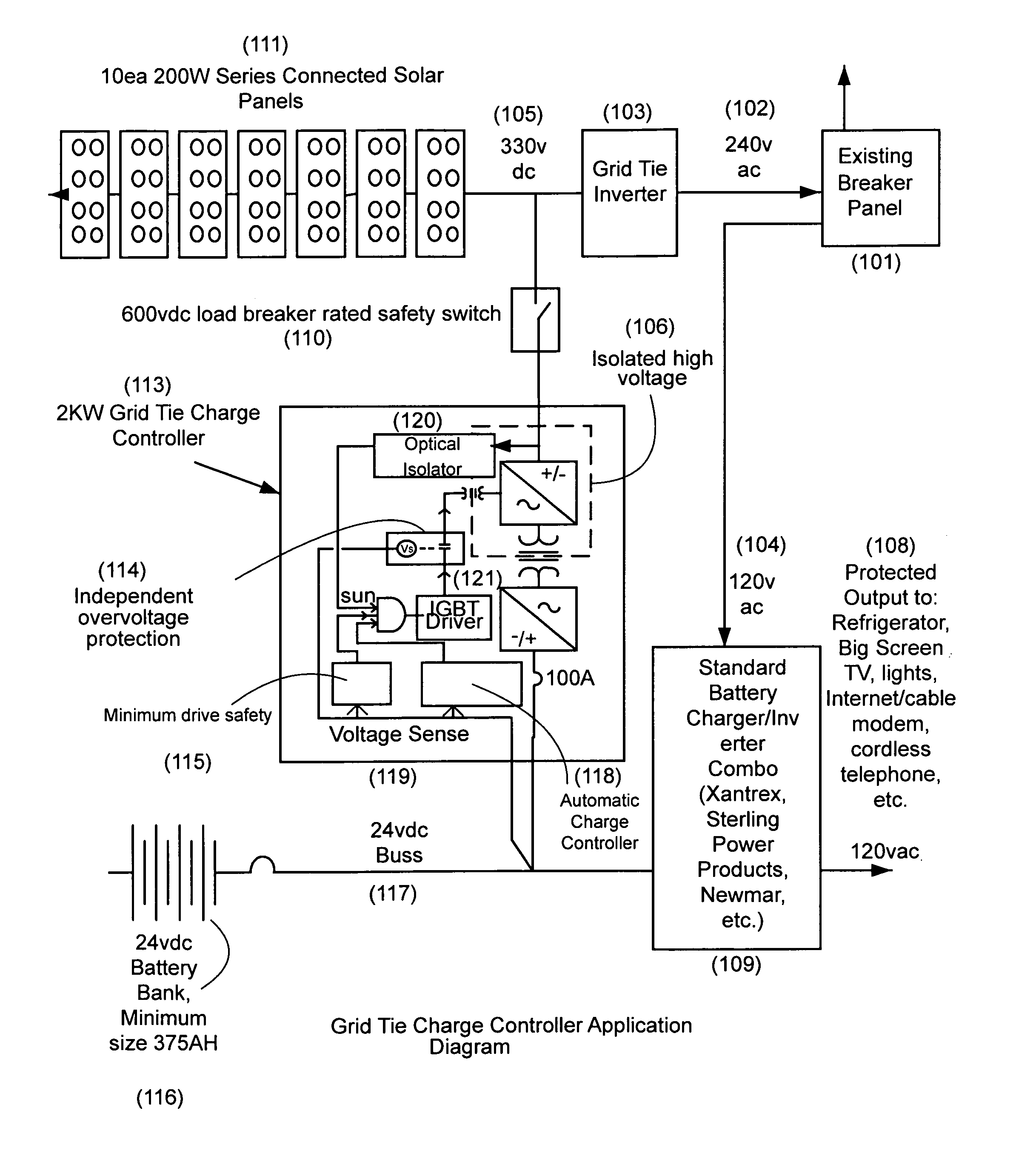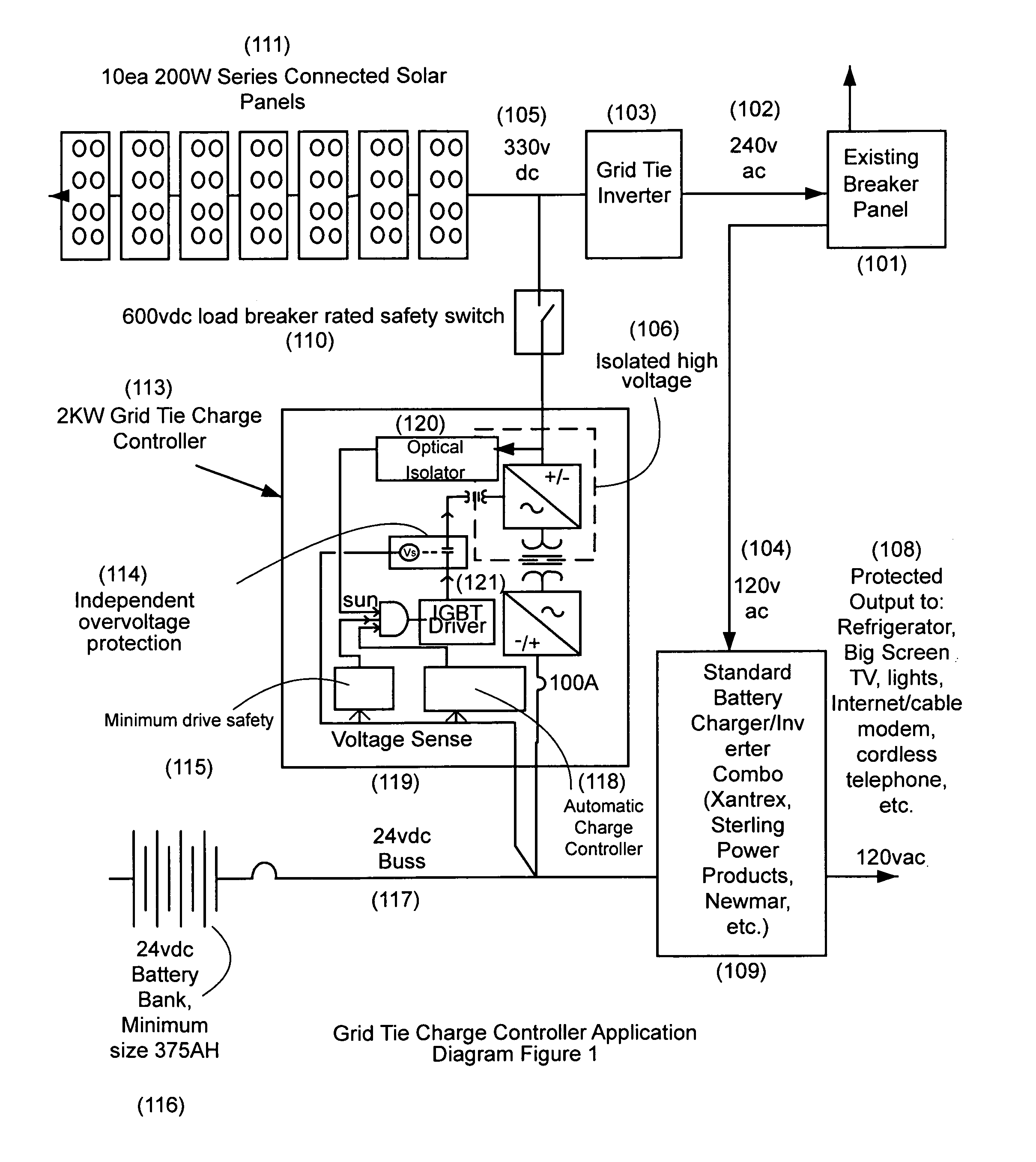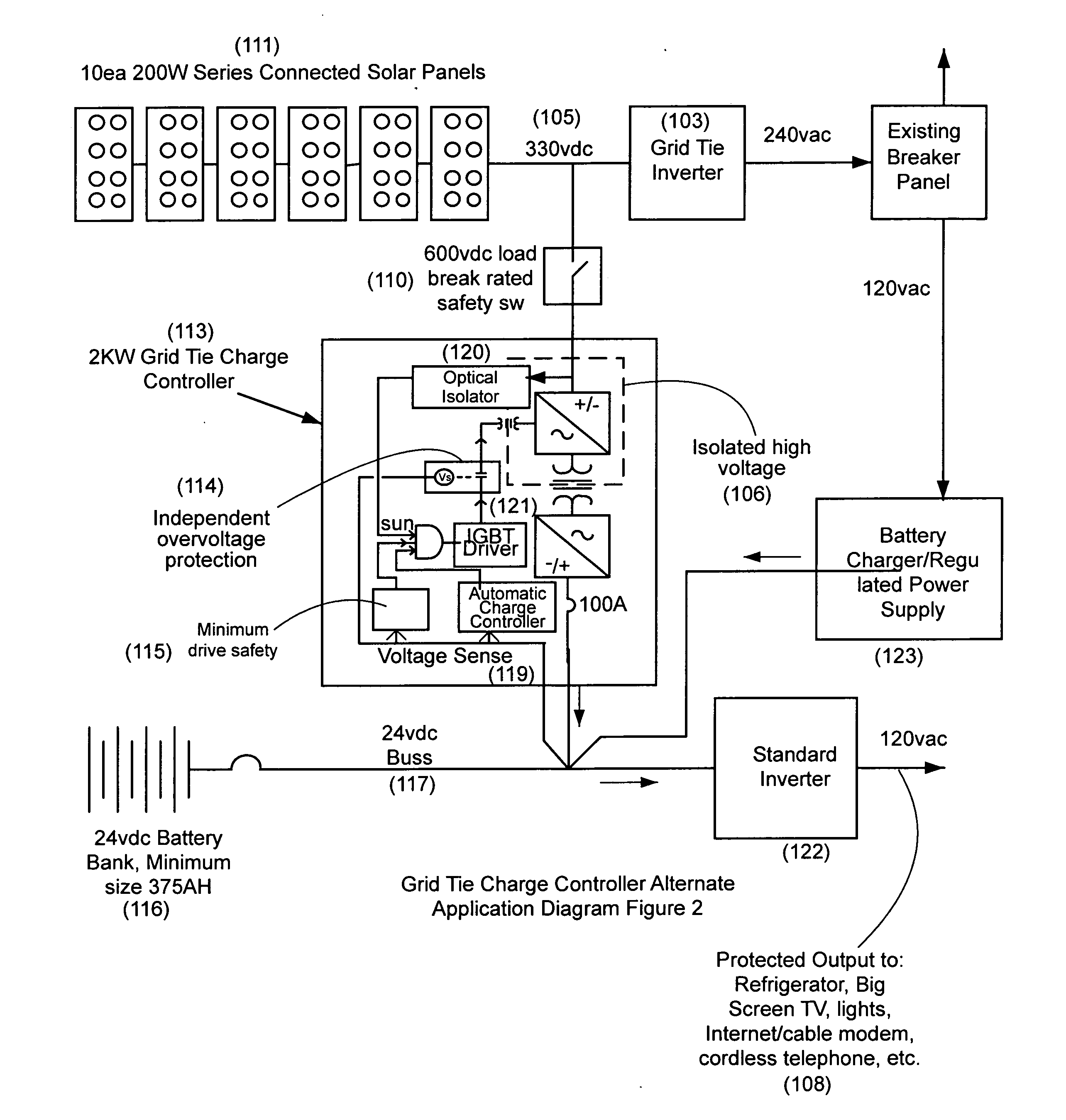Grid tie charge controller
a charge controller and grid tie technology, applied in the direction of electrochemical generators, secondary cell servicing/maintenance, transportation and packaging, etc., can solve the problems of high cost of high-voltage grid-tie system to get solar back up from high-voltage grid-tie system, gird tie system stops supplying power, etc., to prevent any backflow of energy
- Summary
- Abstract
- Description
- Claims
- Application Information
AI Technical Summary
Benefits of technology
Problems solved by technology
Method used
Image
Examples
Embodiment Construction
[0085]A grid tie charge controller system for an existing high-voltage photovoltaic array has a grid tied charge controller connecting in parallel between an existing high voltage photovoltaic array and an existing high voltage gird tie inverter. The present invention grid tie charge controller system 113 ties in between the 330 V DC side 105 and the 24 V DC bus 117 so that it completely bypasses the grid tie inverter. It can be used along with a standard charge controller, or without if a standard charge controller is absent. The grid tie charge controller is configured to retrofit “tap in” to an existing grid tie photovoltaic system to draw off power to charge storage batteries; (See FIG. 1&FIG. 2. Application Diagrams) The grid tie charge controller has a transformer that transforms the relatively high voltage (200-500 vdc) of a typical grid tie solar system down to low voltage, high current, 12 / 24 v battery bank typically used in an “off grid” type systems; and (See FIG. 3. Bloc...
PUM
 Login to View More
Login to View More Abstract
Description
Claims
Application Information
 Login to View More
Login to View More - R&D
- Intellectual Property
- Life Sciences
- Materials
- Tech Scout
- Unparalleled Data Quality
- Higher Quality Content
- 60% Fewer Hallucinations
Browse by: Latest US Patents, China's latest patents, Technical Efficacy Thesaurus, Application Domain, Technology Topic, Popular Technical Reports.
© 2025 PatSnap. All rights reserved.Legal|Privacy policy|Modern Slavery Act Transparency Statement|Sitemap|About US| Contact US: help@patsnap.com



